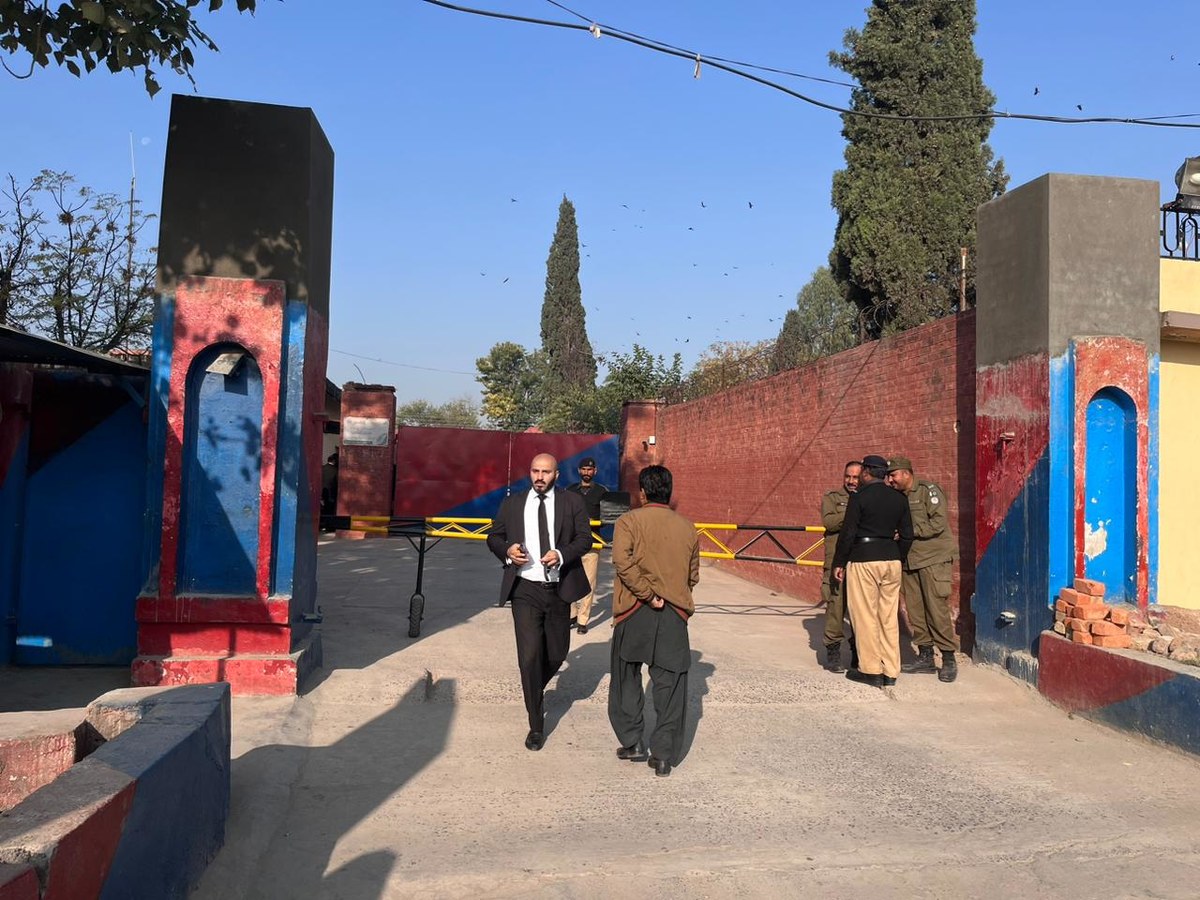RAWALPINDI: Former prime minister Imran Khan’s legal team on Saturday accused the officials of a high-security prison in Rawalpindi for flouting court orders by not ensuring adequate media presence during his jail trial on charges of divulging state secrets, saying today’s proceedings could not be called an “open trial.”
A special court established to hear what has popularly come to be called the cipher case has been conducting the trial inside the Adiala prison in Rawalpindi since Khan was indicted under the Official Secrets Act last month after the government said he could not be moved to a courtroom for security reasons.
The Islamabad High Court (IHC) ruled last week, however, such hearings were illegal and ordered an open trial with media access.
A large number of journalists were present to attend the special court proceedings at the prison facility Saturday morning, though most of them were disappointed after the authorities only called three local journalists in to witness the trial.
“It was directed by the Islamabad High Court that an open trial in the cipher case will be given to Imran Khan,” the ex-PM’s lawyer, Intazar Hussain Panjutha, told Arab News. “But unfortunately, today’s hearing was in the violation of the order of IHC.”

A lawyer is seen walking out of the gate of Adiala Jail in Rawalpindi, Pakistan, on December 2, 2023. (AN Photo)
“The proceedings were held in a similar manner as they were being held prior to the declaration of IHC,” he continued. “We protested this, we resisted it before the court. It was not an open trial.”
Asked about Khan’s morale, he said the former prime minister was in high spirits and looked confident.
“He was waiting for the hearing to start and he was waiting for the media to come in,” he added.
Khan’s spokesperson on legal affairs, Naeem Haider Panjutha, also weighed in, saying the cipher case hearings could not be described as part of fair trial.
He informed the three journalists were allowed to witness the trial only after Khan’s legal team boycotted the hearing.
“Khan said this is not a fair trial,” he added. “Fair trial means giving access to the media. Media is public. Media should be given permission [to cover the proceedings].”
According to Yasir Hakeem, a journalist working for Samaa TV who was allowed to witness the trial, the ex-premier objected to his treatment, saying he was made to feel like an animal while his rival, Nawaz Sharif, was “brought back” from exile in London after being convicted in a corruption reference.
“We are not even allowed to speak,” Hakeem quoted him as saying.
The former prime minister, who is the chairman of the Pakistan Tehreek-e-Insaf (PTI) party, is being held at Adiala jail where he is serving a three-year sentence in a separate case in which he was convicted in August of failing to disclose assets earned from the sale of state gifts while he was PM from 2018-2022.
Khan is also accused in a number of other cases, including the cipher case, which relates to an alleged diplomatic correspondence between Washington and Islamabad that Khan says was proof that his ouster as PM in a parliamentary vote of no-confidence in April 2022 was part of a US conspiracy to remove him. Washington has repeatedly denied Khan’s accusations.
Khan, arguably the most popular politician in the country, has not been seen in public since he was arrested in August. Prior to that, he regularly addressed his millions of followers via social media and held massive public rallies and protest marches.
The court adjourned its hearings until Monday.
















